Use this classic free Computer Music synth to generate bubbling movement across your track
One of the magazine's most beloved freebies is the perfect tool for creating a sense of movement in your mixes
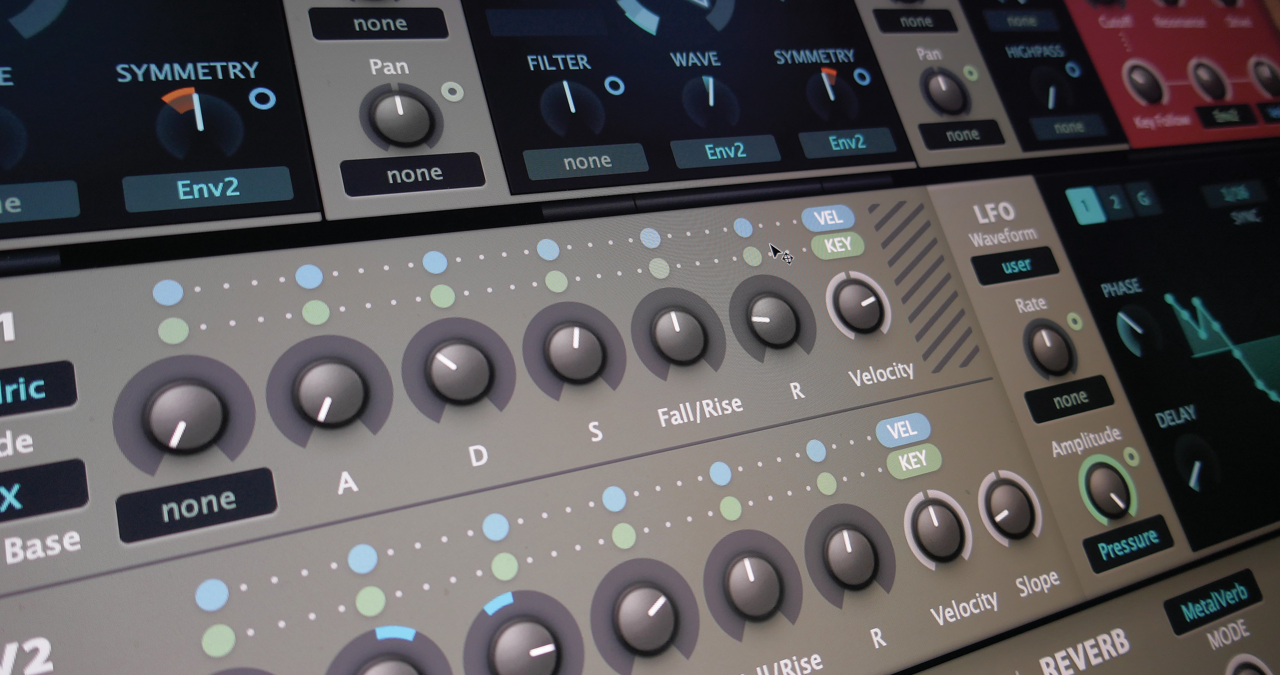
In this tutorial, we are going to create a couple of different styles of movement, both from within a tasty free synth, and also by harnessing automation within our DAW.
To get started, you're going to need to get hold of one of the sadly closed Computer Music magazine's Plugin Suite stars - ZebraCM from u-he.
You can get hold of this by picking up a back issue of the magazine, which closed in September last year, via Pocketmags or your favoured digital/print magazine supplier.
Once you've grabbed an issue, check the download instructions within the pages of the magazine to get hold of ZebraCM (and the rest of the Plugin Suite for that matter)
(To view bigger images, right click and select 'Open Image in New Tab')
Use ZebraCM to generate movement
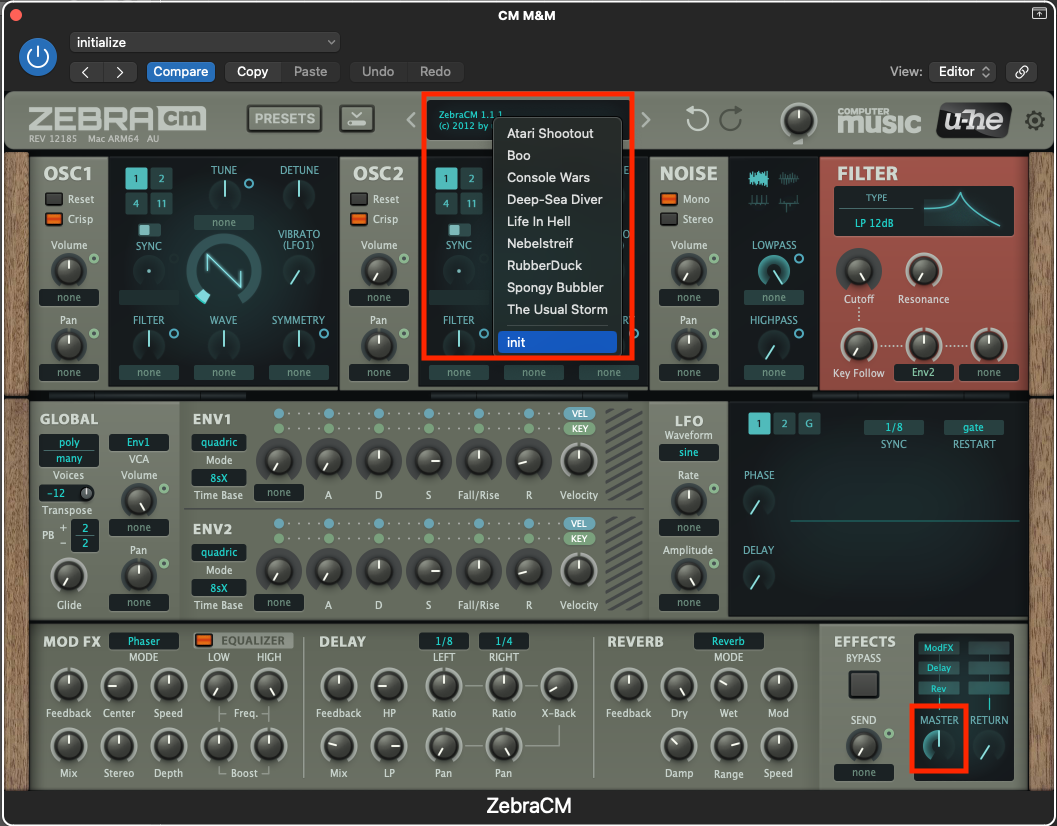
1. Once you've installed ZebraCM and opened it in your DAW, click on the display at the top of the window, and select 'init' from the bottom of the menu. This will initialise the patch and give us a clean sound to work with. You should also visit the master volume control, located on the bottom right, and adjust this to a position of 12 o'clock. This synth plugin can be a little loud, and you don't want to damage your ears or speakers.
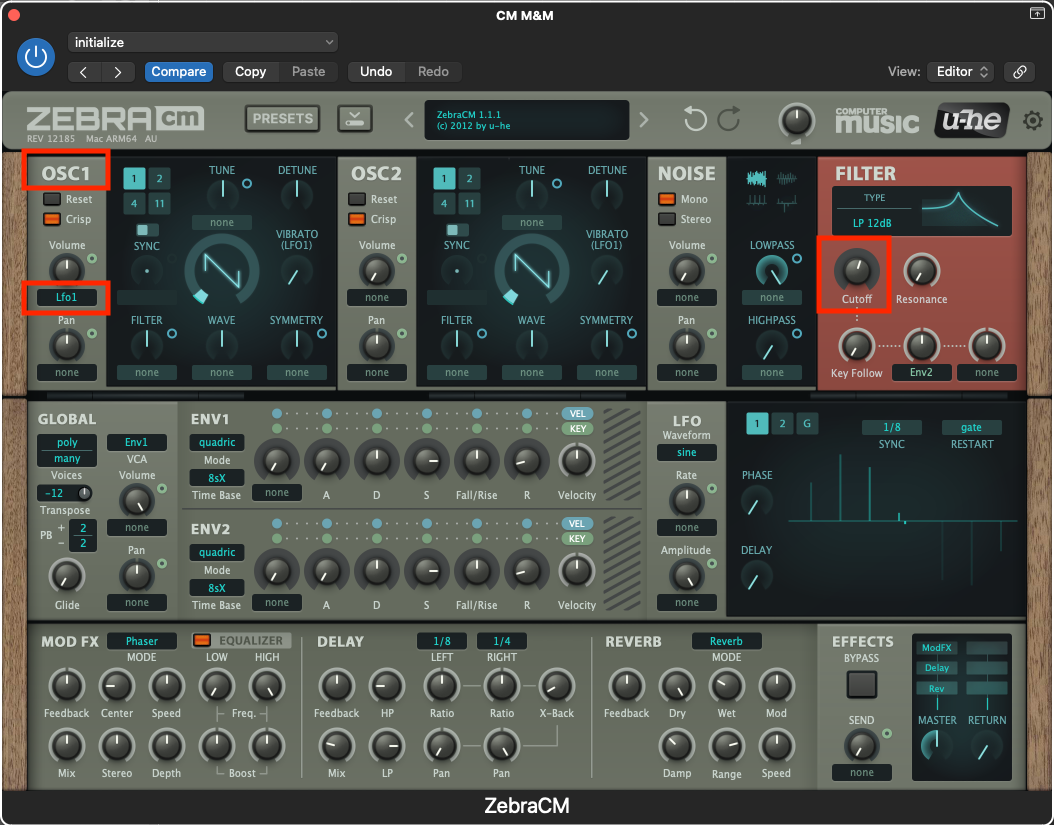
2. You might benefit from reducing the cutoff amount within the filter section, adjusting the pot level to your own taste. Then move to the OSC1 section, where you will see a Volume pot on the left. Beneath this pot, click on the drop-down and select LFO1. This is directing the LFO in the direction of OSC1’s amplitude setting.
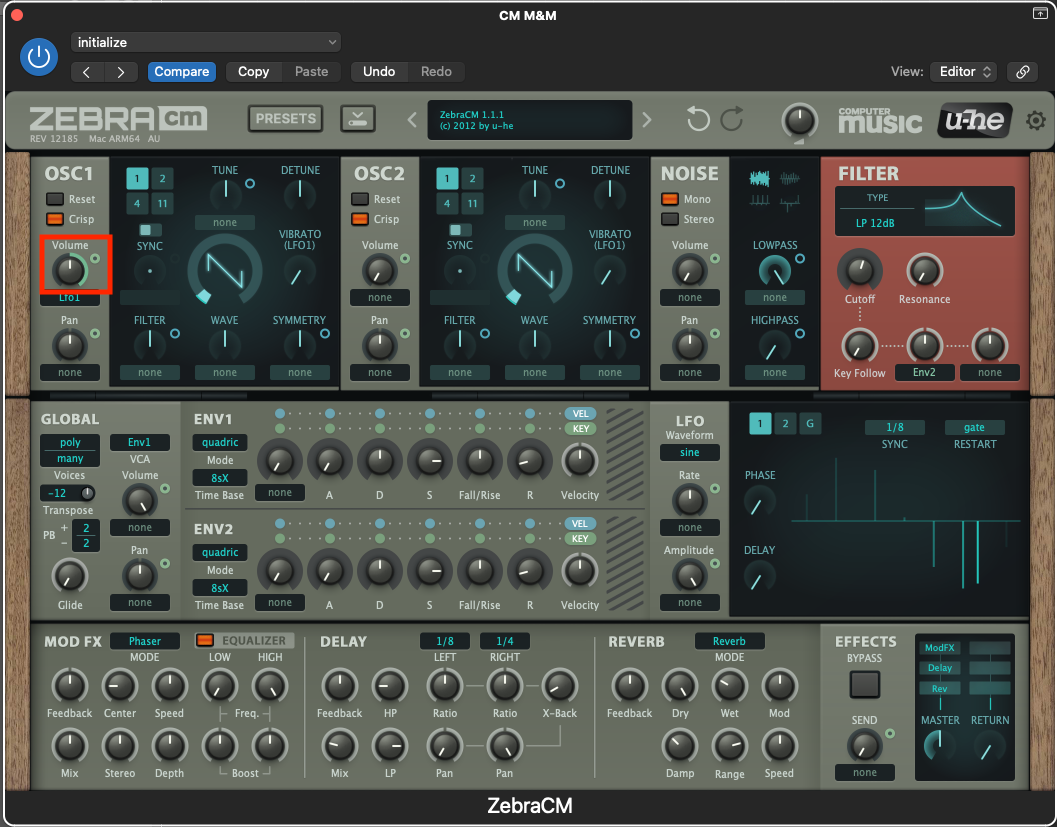
3. Just to the right hand side of the volume pot, you will see a small turquoise circle. Click and hold on this, and drag upwards. You will see a semi-circular line appear, around the outside of the pot. This indicates the amount of LFO modulation, which is being sent in the direction of the amplitude/volume pot.
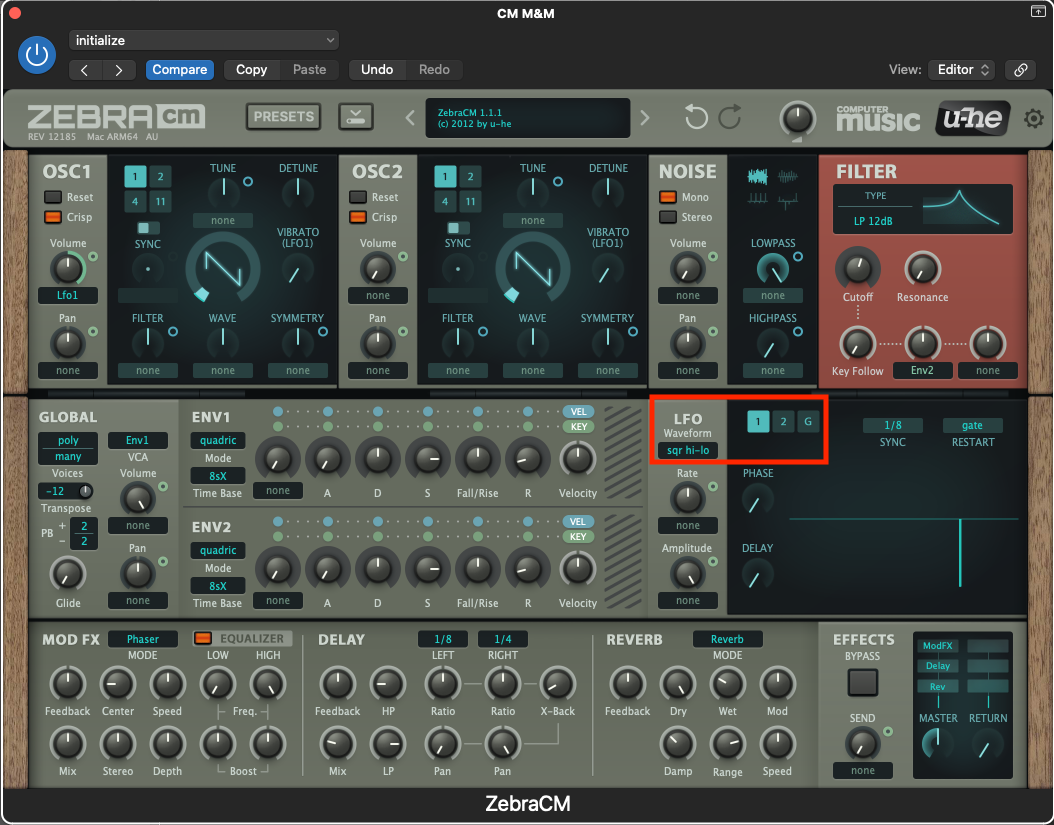
4. Move to the LFO section, located on the right-hand-side of the plugin window. Make sure that LFO1 is selected, in turquoise. You should see that the waveform is currently set to Sine. Change this by clicking on the drop-down menu, to ‘Sqr hi-Lo’. If you play a note, you should hear the volume abruptly turning on and off, like a gate. This is being generated by the LFO’s square wave.

5. The LFO will default to synchronise to the tempo of your DAW. By default, the rate is set to 1/8th, but you can adjust this to a different note value, if preferred. Importantly, the restart drop-down menu should be set to gate, which means that the LFO will begin, and trigger, each and every time you play a note.
Get the MusicRadar Newsletter
Want all the hottest music and gear news, reviews, deals, features and more, direct to your inbox? Sign up here.
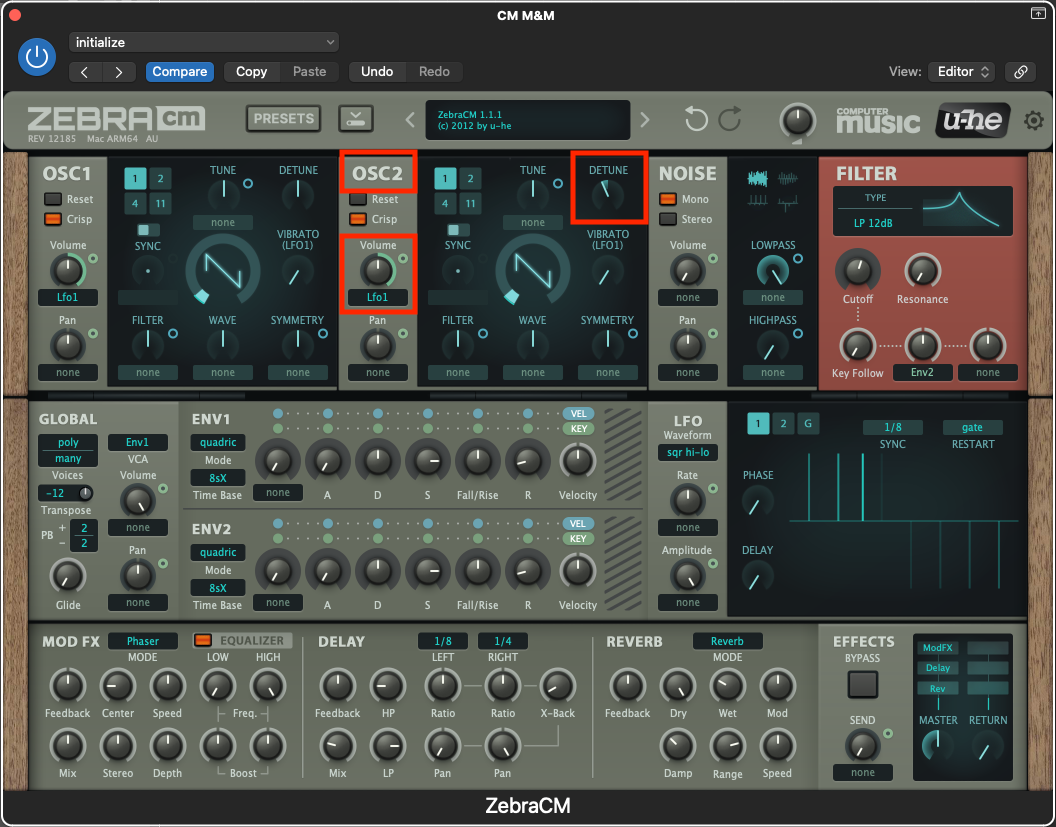
6. Currently, our patch is only making use OSC1. If you want to thicken the overall texture, you could try adding OSC2, but bear in mind that you will need to make the same LFO/Volume pot adjustments at the OSC2 level, to keep the effect consistent across the patch. It would also be beneficial to detune OSC2 very slightly, to prevent phase cancellation.
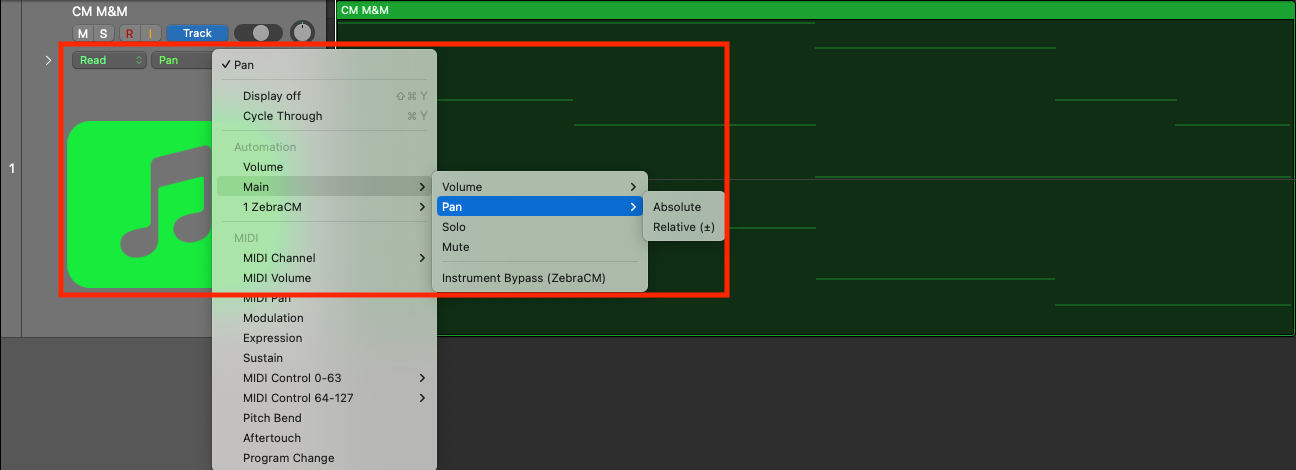
7. Using your newly created patch, record a track within your DAW. We would recommend using a heavy degree of quantise, as this will help maintain the synchronisation of the LFO. Once recorded, activate automation on the track, from within your DAW. Select the automation level which corresponds with stereo panning.

8. Draw in degrees of automation that will create the effect of the gated synthesiser sound moving across the stereo field. How abruptly you choose to employ this depends on your production, but you could start with something slow, which will perfectly give a sense of stereo breadth and movement, across the soundstage.
Roland Schmidt is a professional programmer, sound designer and producer, who has worked in collaboration with a number of successful production teams over the last 25 years. He can also be found delivering regular and key-note lectures on the use of hardware/software synthesisers and production, at various higher educational institutions throughout the UK










